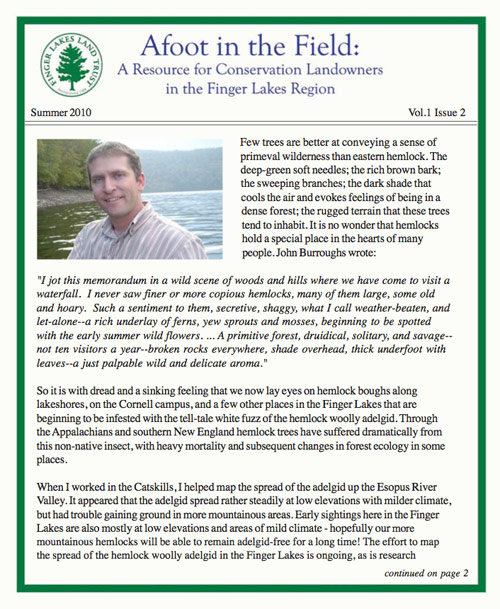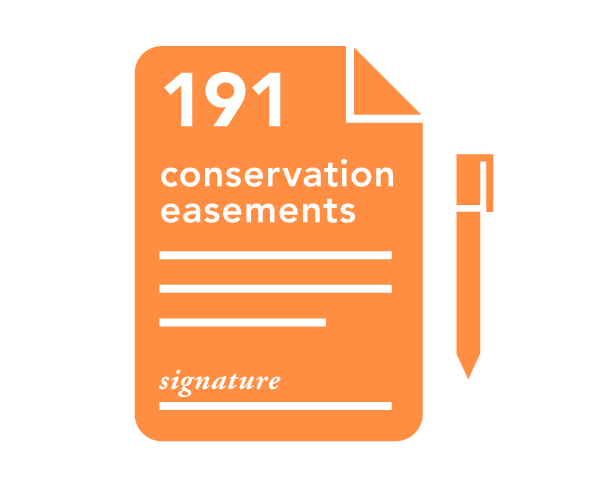Download: Afoot in the Field, Volume 1, Issue 2 (PDF)
Published Summer 2010
From the Introduction:
Few trees are better at conveying a sense of primeval wilderness than eastern hemlock. The deep-green soft needles; the rich brown bark; the sweeping branches; the dark shade that cools the air and evokes feelings of being in a dense forest; the rugged terrain that these trees tend to inhabit. It is no wonder that hemlocks hold a special place in the hearts of many people. John Burroughs wrote:
“I jot this memorandum in a wild scene of woods and hills where we have come to visit a waterfall. I never saw finer or more copious hemlocks, many of them large, some old and hoary. Such a sentiment to them, secretive, shaggy, what I call weather-beaten, and let-alone–a rich underlay of ferns, yew sprouts and mosses, beginning to be spotted with the early summer wild flowers. … A primitive forest, druidical, solitary, and savage– not ten visitors a year–broken rocks everywhere, shade overhead, thick underfoot with leaves–a just palpable wild and delicate aroma.”
So it is with dread and a sinking feeling that we now lay eyes on hemlock boughs along lakeshores, on the Cornell campus, and a few other places in the Finger Lakes that are beginning to be infested with the tell-tale white fuzz of the hemlock woolly adelgid. Through the Appalachians and southern New England hemlock trees have suffered dramatically from this non-native insect, with heavy mortality and subsequent changes in forest ecology in some places.
When I worked in the Catskills, I helped map the spread of the adelgid up the Esopus River Valley. It appeared that the adelgid spread rather steadily at low elevations with milder climate, but had trouble gaining ground in more mountainous areas. Early sightings here in the Finger Lakes are also mostly at low elevations and areas of mild climate – hopefully our more mountainous hemlocks will be able to remain adelgid-free for a long time! The effort to map the spread of the hemlock woolly adelgid in the Finger Lakes is ongoing, as is research…
Download: Afoot in the Field, Volume 1, Issue 2 (PDF)
You can download Afoot in the Field, our biannual stewardship pamphlet for landowners, in PDF format. See all issues here.


